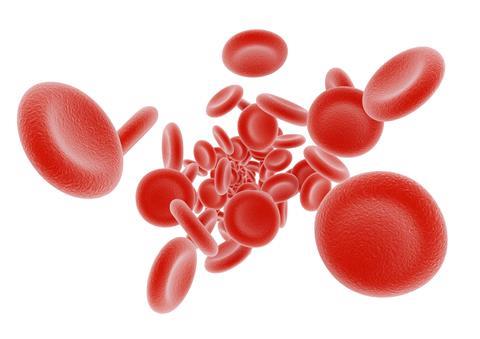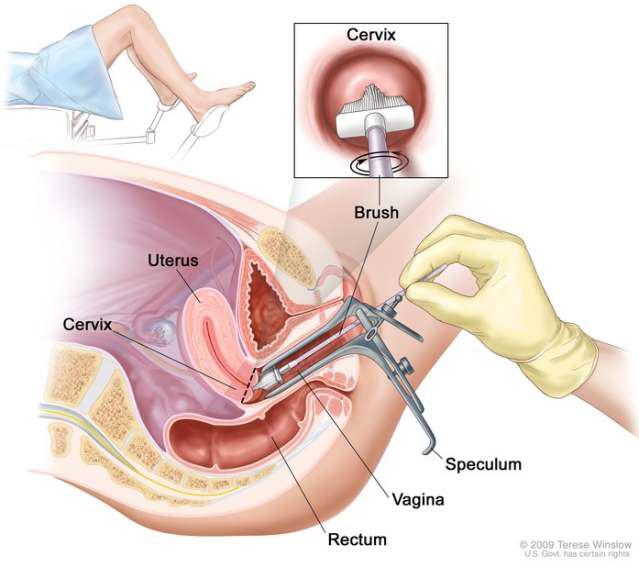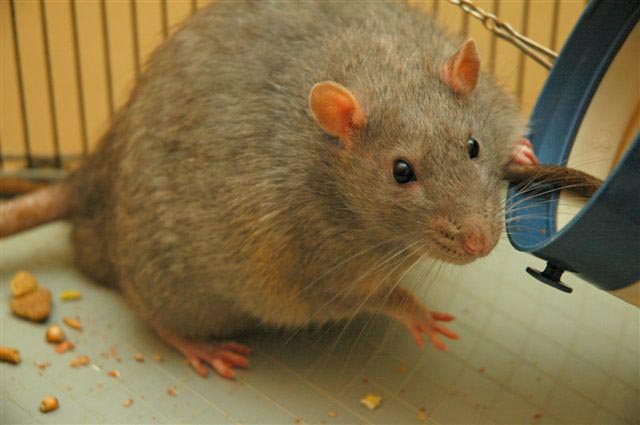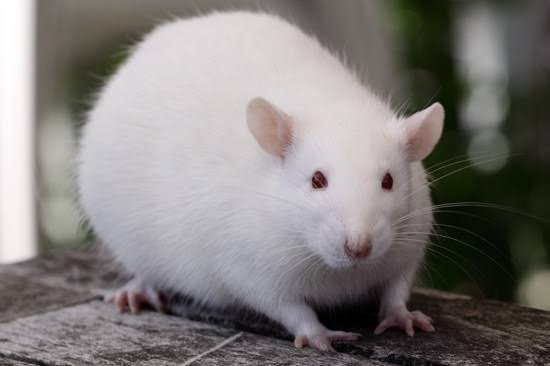Evaluation of Haemo-rheological Variability of Haemoglobin Genotypes in Descent of Rumuche Community, Emohua Local Government Area, Rivers State, Nigeria.

Serekara Gideon Christian, Ransom Baribefii Jacob; Moyosore Ruth Adedeji
Department of Medical Laboratory Science, Faculty of Science, Rivers State University, Nkpolu-Oroworukwo.
P.M.B. 5080, Port-Harcourt, Rivers State, Nigeria.
All Correspondences to: Serekara Gideon Christian E-mail: serekara.christian1@ust.edu.ng
ABSTRACT
The study aimed at evaluating the variability in some haemo-rheological parameters of individuals having different haemoglobin genotypes in Rumuche community, Emohua Local Government Area of Rivers state. A cross-sectional and comparative study design was applied. A total of eighty-seven subjects (sixty-nine AA and eighteen AS haemoglobin genotypes) aged between 20 – 90 years were recruited. Samples collected were analyzed for packed cell volume, erythrocyte sedimentation rate, haemoglobin and fibrinogen concentration using standard methods. Results for haemoglobin genotypes reveals that sixty-nine subjects were haeamoglobin AA (79.31 %), eighteen subjects were haemoglobin AS (20.69 %), no haemoglobin SS genotype was identified among the subjects. Also, the result showed a significant difference in haemoglobin concentration when haemoglobin AA were compared to AS genotypes (14.68 ± 2.600g/dl vs 12.76 ± 2.931g/dl; p = 0.0450). Packed cell volume, erythrocyte sedimentation rate and fibrinogen concentration showed no statistical difference despite variations upon comparison of haemoglobin AA and haemoglobin AS. Based on gender, the variations observed were not statistically significant in all parameters at p < 0.05. The study revealed a significant increase in haemoglobin concentration in favour of individuals with haemoglobin AA genotype. Therefore, a directly proportional difference in the blood viscosity of the different haemoglobin genotypes was observed and this can be a useful diagnostic tool alongside fibrinogen concentration and packed cell volume for predicting the occurrence of some diseases such as atherosclerosis, thrombotic disorders, cardiovascular diseases or haemorrhagic disorders. No variation was observed in packed cell volume, erythrocyte sedimentation rate, and fibrinogen.
Keywords: Haemoglobin Genotype; Haemo-rheological; Packed Cell Volume; Erythrocyte Sedimentation Rate; Fibrinogen; Rumuche Community; Emohua.
INTRODUCTION
Rumuche is one of the communities of Emohua Local Government Area, which was part of the Ikwerre ethnic group of Rivers State. The community has an estimated population of about 5,000 persons as at 2016 [1, 2]. The indigenes of Rumuche are majorly farmers. Haemo-rheology consist of two main words namely, “haemo” which means blood and “rheology” which means the science of how blood is being deformed and how it flows. Rheology which includes blood and plasma viscosity is important in the investigation of some vascular disorders. Haemo-rheology is therefore defined as the study of blood flow in blood vasculatures, taking note of the behavior of red blood cells, their interaction among themselves and also with the endothelial cells of the vascular wall [3]. Haemo-rheology is the study of flow properties of blood and its elements of plasma and cells. Proper tissue perfusion can occur only when the blood’s rheological properties are within certain levels [4].It includes the examination of visible blood properties by the use of rheometric experiments (such as packed cell volume (PCV) and erythrocyte aggregation, plasma (PCV), erythrocyte sedimentation rate (ESR), haemoglobin concentration (Hb) and fibrinogen level of individuals having different haemoglobin genotypes in Rumuche community, Emohua Local Government Area (LGA), Rivers state. The knowledge gain in blood viscosity can be used as a diagnostic tool for the prediction of some diseases such as thrombotic disorders, cardiovascular diseases, atherosclerosis or haemorrhagic disorders, based on the individual’s haemoglobin genotype.
MATERIALS AND METHODS
2.1 Study Design
This is a cross sectional and comparative study which was aimed at evaluating variability in haemorheological parameters of individuals having haemoglobin genotypic differences in Rumuche community, Emohua Local Government Area of Rivers state of Nigeria. A total of eighty-seven subjects were recruited and blood samples were collected and analyzed.
2.2 Study Area
Rumuche is one of the communities of Emohua Local Government Area of Rivers State. Southern Nigeria. Rumuche is located in Nigeria about 470km south of Abuja, the country’s capital town. The Port Harcourt International Airport is about 19km northeast from the community. The community has an estimated population of about 5,000 persons as at 2016. The climate in Rumuche is usually rainy and dry seasons. Rumuche is situated at Latitude 4052’31”N and Longitude 6051’39”E. The indigenes of Rumuche are majorly farmers. The analyses were carried out at the Haematology Laboratory, Medical Laboratory Science Department, Rivers State University, Port Harcourt, Rivers State University Teaching Hospital, Port Harcourt, De-Integrated Medical Diagnostics and Research Laboratory, Ada-George, Port Harcourt and Professor Nimi Briggs Hospital, Rivers State University, Port Harcourt.
2.3 Study Population
A total of 87 subjects (32 males and 55 females) within the age range of 20-90 years were recruited randomly with a total of 69 subjects having AA genotype and 18 subjects having AS genotype. Non indigenes of Rumuche were excluded from the study and those who present signs and symptoms of illness were also excluded from the study. Only apparently healthy subjects were recruited for the study.
2.4 Collection of Blood Samples and Storage
5mL of venous blood was drawn from each subject and 3mL of blood was dispensed into labelled Tripotassium Ethylene Diamine Tetraacetic Acid (K3EDTA) anticoagulated bottle (at concentration of 1.2mg/ml) for haematological analysis while 2mL was dispensed into labelled plain bottles for fibrinogen estimation. Samples were kept in a box and transported to the laboratory at room temperature. The K3EDTA samples were analyzed within 6 hours of collection while the plain bottle samples were spun at 3000rpm for 5 minutes to obtain serum and stored at – 200C until the analysis was done.
2.5 Methodology
2.5.1 Determination of Haemoglobin Genotype
Method: Cellulose acetate method as described by Wild and Bain [8].
Principle: Haemoglobin is a negatively charged protein which when subjected to electrophoresis, migrates toward the anode. Different haemoglobin variants have different migration rates. Due to structural variation in haemoglobin molecules, they possess different electrical charges and therefore separate into different variants during electrophoresis.
Procedure: The cellulose acetate membrane was prepared and 100ml of the Tris-EDTA-borate buffer was poured into the outer sections of the electrophoresis chamber. Two wicks were made wet in the buffer and draped over each support bridge avoiding air bubbles under the wick. The chamber was covered to prevent evaporation. 5 μL of each haemosylate sample was transferred into the well plate. Cellulose acetate membrane was placed in the Zip-Zone aligning plate and samples were applied using the applicator stick. The cellulose acetate membrane was immediately placed in the electrophoresis chamber with the cellulose acetate side down. The chamber was connected to power supply and electrophoresed for 20 minutes at 350 volts and 50 mA.
2.5.2 Determination of Packed Cell Volume
Method: Microhaematocrit method as described by Cheesbrough [9].
Principle: When anticoagulated whole blood is centrifuged in the microhaematocrit centrifuge at 12,000g for 5 minutes, the blood separates into three layers known as the plasma, buffy coat and red cells. The red cells occupy the lower part of the tube and the volume occupied is known as a percentage of the whole blood. This is measured in percentage (%) or litre/litre (L/L).
Procedure: Capillary tubes were filled by capillary action with whole blood up to three-quarter volume. The tubes were properly sealed with a plasticine at one end. The tubes were carefully placed in the numbered slots of the micro-haematocrit rotor with the sealed end against the rim gasket to prevent breakage. The inner lid was scrapped and then the top lid was covered. The samples were centrifuged for 5 minutes at 12,000g. The packed cell volume was read from the micro-haematocrit reader on the zero line and the top of the column on the 100 line and recorded in percentage.
2.5.3 Determination of Haemoglobin Concentration
Method: Cyanmethaemoglobin method as described by Ochei and Kolhatkar [10].
Principle: Haemoglobin is treated with a reagent containing potassium ferricyanide, potassium cyanide and potassium dihydrogen phosphate. The ferricyanide forms m e t h a e m o g l o b i n w h i c h i s c o n v e r t e d t o cyanmethaemoglobin by the cyanide. All forms of haemoglobin except sulfhaemoglobin are converted to cyanmethaemoglobin.
Procedure: 0.02ml of blood was added to 5ml of Cyanmethaemoglobin reagent (Drabkin’s solution) in a test tube (1:250 dilution). The tube was well mixed and allowed to stand for 10 minutes. Absorbance (A) was read in the spectrophotometer at 540nm, while zeroing the spectrophotometer with the blank (Drabkin’s solution).
Calculation of Results
| Absorbance of Standard | ||
| Concentration of Test = | x Concentration of Standard | |
| Absorbance of Test | ||
Results were recorded in g/dL.
2.5.4 Determination of Erythrocyte Sedimentation
Rate
Method: Westergren method as described by Osei-Bimpong and Burthem [11].
Principle:
When citrated blood in a vertically positioned Westergren tube is left undisturbed, red cells aggregate, stack together to form rouleaux and sediment through the plasma.
Procedure:
0.4ml (1 part) of sodium citrate was added into a Westergren bucket and 1.6ml (4 parts) of well mixed whole blood was added directly into the bucket. A Westergren tube of 200mm was inserted into bucket with the diluted blood drawn up to the zero mark and mixed properly. The tube was vertically placed on the stand, away from direct sunlight and left undisturbed and free from vibrations for 1 hour. The result was read in mm/hr after 1 hour.
2.5.5 Determination of Fibrinogen Concentration Method: Sandwich enzyme-linked immunosorbent assay (ELISA) method. Using Fibrinogen Elisa Kit, Elabscience Biotech Co., Ltd, China. Lot No PHLR6HT9ME; Expiry Date: 2020/07/11
Principle:
This ELISA kit uses the Sandwich-ELISA principle. The micro ELISA plate provided in this kit has been pre-coated with an antibody specific to Human fibrinogen. Standards or samples are added to the micro ELISA plate wells and combined with the specific antibody. Then a biotinylated detection antibody specific for Human fibrinogen and Avidin-Horseradish Peroxidase (HRP) conjugate are added successively to each micro plate well and incubated. Free components are washed away. The substrate solution is added to each well. Only those wells that contain Human fibrinogen, biotinylated detection antibody and Avidin-
HRP conjugate will appear blue in color. The enzyme-substrate reaction is terminated by the addition of stop solution and the color turns yellow. The optical density (OD) is measured spectrophotometrically at a wavelength of 450 nm ± 2 nm. The OD value is proportional to the concentration of Human fibrinogen. You can calculate the concentration of Human fibrinogen in the samples by comparing the OD of the samples to the standard curve.
Procedure:
Standard working solution was added to the first two columns: Each concentration of the solution was added in duplicate, to one well each, side by side (100 uL for each well). Samples were added to the other wells (100 uL for each well). The plate was covered with the sealer provided in the kit and incubated for 90 min at 370C. Note: Solutions were added to the bottom of the micro ELISA plate well, touching of the inside wall was avoided. The liquid was then removed out of each well. Washing was avoided. 100 μL of Biotinylated Detection Antibody working solution was immediately added to each well and covered with the Plate sealer. It was gently mixed and incubated for 1 hour at 37°C. The solution was decanted from each well, and 350 uL of wash buffer was added to each well and soaked for 1-2 min and the solution was decanted from each well and patted dry against clean absorbent paper. The wash step was repeated 3 times. 100 μL of HRP Conjugate working solution was added to each well and covered with the Plate sealer. It was incubated for 30 min at 37°C. The solution was decanted from each well and the wash process was repeated for five times. 90 μL of Substrate reagent was added to each well and covered with a new plate sealer. This was incubated for about 15 min at 37°C. The plate was protected from light. 50 μL of Stop Solution was added to each well. The optical density (OD value) of each well was determined at once with a micro-plate reader set to 450 nm. Calculation of results was performed using Beer-Lambert’s law.
Absorbance of Test
Conc.of Test = x Conc.of Standards nearest to test
Absorbance of Standards
2.6 Statistical Analysis
Statistical analysis was done using Graph-pad prism version 8.2.0 for both descriptive and inferential statistics for the different groups under study. The descriptive data was given as mean ± standard deviation (SD).
RESULTS
3.1 Demographic Profile of Participants in the Study population
A total of 87 subjects were recruited for the study between August 4th and August 20th, 2019. Eighteen (20.69%) of the total number were of AS haemoglobin genotype while 69 (79.31%) were of the AA haemoglobin genotype. Table 3.1 shows the demographic profile of the study population.
Table 3.1: Demographic Profile of Participants in the Study Population
| Haemoglobin Genotype | Study Population |
| AA | 69 (79.31 %) |
| AS | 18 (20.69 %) |
Evaluation of Haemo-rheological Variability…
| 3.2 | Comparison of Some Haemo-rheological | value of 0.0450. There is a non-significant increase |
| Parameters Based on Differences in | (p>0.05) in the PCV of AA individuals as compared to the | |
| Haemoglobin Genotypes | AS individuals with a p-value of 0.1013. A non-significant | |
| increase (p>0.05) in the ESR of AA and AS individuals | ||
| From table 3.2, there is a significant increase (p<0.05) in | with a P-value of 0.0649. A non-significant increase | |
| the haemoglobin concentration of AA genotype | (p>0.05) in the fibrinogen level of AS individuals as | |
| individuals as compared to the AS individuals with a p- | compared to AA individuals. | |
Table 3.2: Comparison of Some Haemo-rheological Parameters Based on Differences in Haemoglobin Genotypes
| Parameters | AA | AS | p-value | Inference |
| Mean ± SD | Mean ± SD | |||
| Haemoglobin (g/dl) | 14.68 ± 2.600 | 12.76 ± 2.931 | 0.0450 | S |
| PCV (%) | 37.78 ± 4.466 | 35.11 ± 5.016 | 0.1013 | NS |
| ESR (mm/hr) | 23.94 ± 21.16 | 37.00 ± 19.88 | 0.0649 | NS |
| Fibrinogen (ng/ml) | 474.9±190.1 | 499.4±199.6 | 0.7086 | NS |
3.3 Comparison of Some Haemo-rheological
Parameters in Males Based on Differences in Haemoglobin Genotypes
From table 3.3, there is a non-significant increase (p>0.05) in the Hb of AA male individuals as compared to AS male individuals with a p-value of 0.7219. A non-significant increase (p>0.05) in the PCV of AA male individuals as compared to the AS male individuals wth a p-value of 0.7524. A non-significant increase (p>0.05) in the ESR of AS male individuals as compared to the AA male individuals with a p-value of 0.6068. A non-significant increase (p>0.05) in the fibrinogen level of AA males as compared to AS males with a p-value of 0.4450.
Table 3.3: Comparison of Some Haemo-rheological Parameters in Males Based on Differences in Haemoglobin Genotypes
| Parameters | AA | AS | p-value | Inference |
| Mean ± SD | Mean ± SD | |||
| Haemoglobin (g/dl) | 14.13 ± 2.605 | 12.14 ± 3.048 | 0.0858 | NS |
| PCV (%) | 37.46 ± 4.294 | 34.31 ± 4.535 | 0.0811 | NS |
| ESR (mm/hr) | 26.54 ± 21.94 | 37.62 ± 23.33 | 0.2244 | NS |
| Fibrinogen (ng/ml) | 460.0 ± 174.0 | 495.2 ± 205.6 | 0.6420 | NS |
Key: S=Significant; NS=Non Significant; PCV= Packed Cell Volume; ESR=Erythrocyte Sedimentation Rate; Mean ± SD= Mean ± Standard Deviation. Note: The abbreviations are applicable to all tables
DISCUSSION
The normal haemoglobin usually found in adult humans is Hb A, although some other forms occur as a result of point mutation in the globin chains responsible for this formation. These include the Hb S, Hb C, Hb D, amongst many others. Haemoglobin genotypes are inherited characters determined by the different combinations of amino acid sequence found on the globin polypeptide chains. They include HbAA, HbAS, HbAC, HbSS, HbSC amongst others. Haemorheological tests are a group of tests used majorly to determine the blood rheological status of an individual. In course of this research work, two haemoglobin genotypes were considered, which are AA and AS genotypes [7, 12].
Haemoglobins found in the red blood cells are intracellular proteins which help in the transportation of oxygen from the lungs to the tissues. From the results obtained, haemoglobin concentration for Hb AA genotype 14.68 ± 2.600 was found to be significantly increased by p<0.05 when compared to that of the Hb AS genotype 12.76 ± 2.931. This result is in accordance with the study of Obeagu et al., [13] and the significant difference is as a result of Hb S seen in the Hb AS genotype which causes occlusion in blood vessels thereby reducing the oxygen carrying capacity of the blood and the circulating red blood cells due to their destruction by the spleen. The mean level of haemoglobin concentration in male subjects for AA genotype was 14.96 ± 2.876 g/dL while that of AS was 14.38 ± 2.024 g/dL. The mean level for AA females was found to be 14.13 ± 2.605 g/dL while that of AS was 12.14 3.048 g/dL. The values of haemoglobin concentration for haemoglobin genotype AA was within the normal reference values according to World Health Organization which is 13.0-18.0g/dL for males and 12.5-16.0g/dL for females which confirms the works of Bakare et al. [14] and Obeagu et al. [13] that a significant difference occurs when haemoglobin genotype AA is compared with AS.
The major determinant of blood viscosity is the packed cell volume and an increase in packed cell volume causes increase in blood viscosity. Also, reduction in packed cell volume will lead to reduction in the blood viscosity. Packed cell volume for both haemoglobin genotypes had mean values of 37.78 ± 4.466 % for Hb AA genotype and 35.11 ± 5.016 % for Hb AS genotype. There was a non-significant difference of p>0.05 seen and when both genotypes were compared. Also, when genders (males and females) of both genotypes were compared, the mean value was found to be 38.40 ± 5.459 % for AA genotype and 37.20 ± 6.140 % for AS genotype males, while the females had 37.46 ± 4.294 % for AA genotype and 34.31 ± 4.535 % for AS genotype. There was also no significant difference seen which contradicts the work of Obeagu et al, [13] that due to the destruction of sickle shaped cells before the normal life span of 120 days elapses in AS individuals.
There was a non-significant difference of p>0.05 in the comparison of the erythrocyte sedimentation rate of haemoglobin genotypes AA and AS individuals. Based on this, being AA or AS does not invariably affect erythrocyte sedimentation rate in apparently healthy individuals. Fibrinogen level for both haemoglobin genotypes indicated that there was a non-significant difference and when genders of both genotypes were compared, there was also no significant difference which was in accordance with the work of Ajayi and Uche [13] that there is no significant increase in the fibrinogen level of AA and AS genotypes.
CONCLUSION
From the study, haemoglobin concentration was significantly higher in AA individuals than in AS individuals. Packed cell volume showed no significant variation; erythrocyte sedimentation rate showed no significant variation due to the absence of sickle cell disease, inflammatory disease, infections, amongst other disease conditions. Also, fibrinogen level showed no significant variation because the clotting factors of these individuals seems normal at the time of the research.
As a result of the significant difference in the haemoglobin concentration, there will be a directly proportional difference in the blood viscosity of the different haemoglobin genotypes and this can be a useful diagnostic tool alongside fibrinogen concentration for predicting the occurrence of some diseases such as atherosclerosis, thrombotic disorders, cardiovascular diseases or haemorrhagic disorders.
LIMITATION OF THE STUDY
The study did not include subjects with haemoglobin SS and/or SC, due to the fact that Sicklers (those with Sickle Cell Anaemia) did not give their consent to be part of the study.
Serekara Gideon Christian
CONSENT
A written consent was obtained from each participant.
ETHICAL APPROVAL
Approval to conduct the research was granted by the Department of Medical Laboratory Science, Rivers State University, Nigeria.
COMPETING INTERESTS
Authors have declared that no competing interests exist.
REFERENCES
- World postal code (2019). Emohua post codes: Nigeria . Retrieved from https://www. worldpostalcode.com/nigeria/rivers/emohua. Accessed 11th July, 2019.
- Rumuche in Rivers state, Nigeria. Destination Guide. Retrieved from https://www.tripmondo. com/nigeria/rivers-state/emohua/rumuche. Accessed 28th July, 2019.
- Robertson A. M., Sequeira A., Kameneva M. V. (2008). Hemorheology. In: Hemodynamical Flows (pp 63-120). Oberwolfach Seminars, vol
- Birkhäuser Basel, Switzerland.
- Cokelet, G. R. & Meiselman, H. J. (2007). Basic aspects of haemorheology, in Baskurt, O. K., Hardeman, M. R., Rumping, M. W. & Meiselman, H. J. (Eds), Handbook of Haemorheology and Haemodynamics (7th ed; pp 21-33). The Netherlands; IOS Press.
- Ajayi, O. I., Famodu, A. A., Otakpor, A. N. & Idubor, J. F. (2005). Fibrinolytic risk of unmodified electroconvulsive therapy in Nigeria depressed patients, Haema, 8(3), 436-438.
- Hardisson, R. C. (2012). Evolution of haemoglobin and its genes, Cold Spring Habour Perspectives in Medicine, 2(12), 1-18.
- Buseri, F. I. & Okonkwo, C. (2014). Abnormal haemoglobin genotypes and rhesus blood groups associated with HIV infection among HIV – exposed infants in North-Western Nigeria, Dove Medical Press, 2014(6), 15-20.
- Wild, B. J. & Bain, B. J. (2012). Investigation of abnormal haemoglobins and thalassemia, in Bain, B. J., Bates, I., Laffan, M. A. & Lewis, S. M. (Eds), Dacie and Lewis practical haematology (11th ed; pp. 301-332). United Kingdom; Churchill Livingstone.
- Cheesbrough, M. (2006). Haematological tests, in Cheesbrough, M. (Ed), District Laboratory Practice in Tropical Countries (2nd ed; pp 268-347). New York, Cambridge University Press.
- Ochei, J. O. & Kolhatkar, A. A. (2007). The complete blood count, in Ochei, J. O. & Kolhatkar, A. A. (Eds), Medical Laboratory Science Theory and Practice (pp. 273-287). United Kingdom, McGraw-Hill publishing company limited.
- Osei-Bimpong, A. & Burthem, J. (2012). Supplementary techniques including blood parasites diagnosis, in Bain, B. J., Bates, I., Laffan, M. A. & Lewis, S. M. (Eds), Dacie and Lewis Practical Haematology (11th ed; pp 101-121). United Kingdom; Churchill Livingstone.
- Akhigbe, R. E., Ige, S. F., Afolabi, A. O., Azeez, O. M., Adegunlola, G. J. & Bamidele, J. O. (2009). Prevalence of haemoglobin variants, ABO and rhesus blood groups in Ladoke Akintola University of Technology, Ogbomoso, Nigeria, Trends in Medical Research, 4(2), 24-29.
- Obeagu, E. I., Okoroiwu, I. L., Daniel-Igwe, G. & Elemchukwu, Q. (2015). Comparison of some haematological profiles in genotype AA, AS and AC persons amongst Imo State University students, International Journal of Advanced Multidisciplinary Research, 2(12), 23-28.
- Bakare, A. A., Azeez, M. A. & Agboiade, J. O. (1997). Gene frequencies of ABO and Rhesus blood groups and haemoglobin variants in Ogbomoso, south-west, Nigeria, Global Journal of Medical Science, 3(3), 17-22.























 PV
PV
 P G
P G










